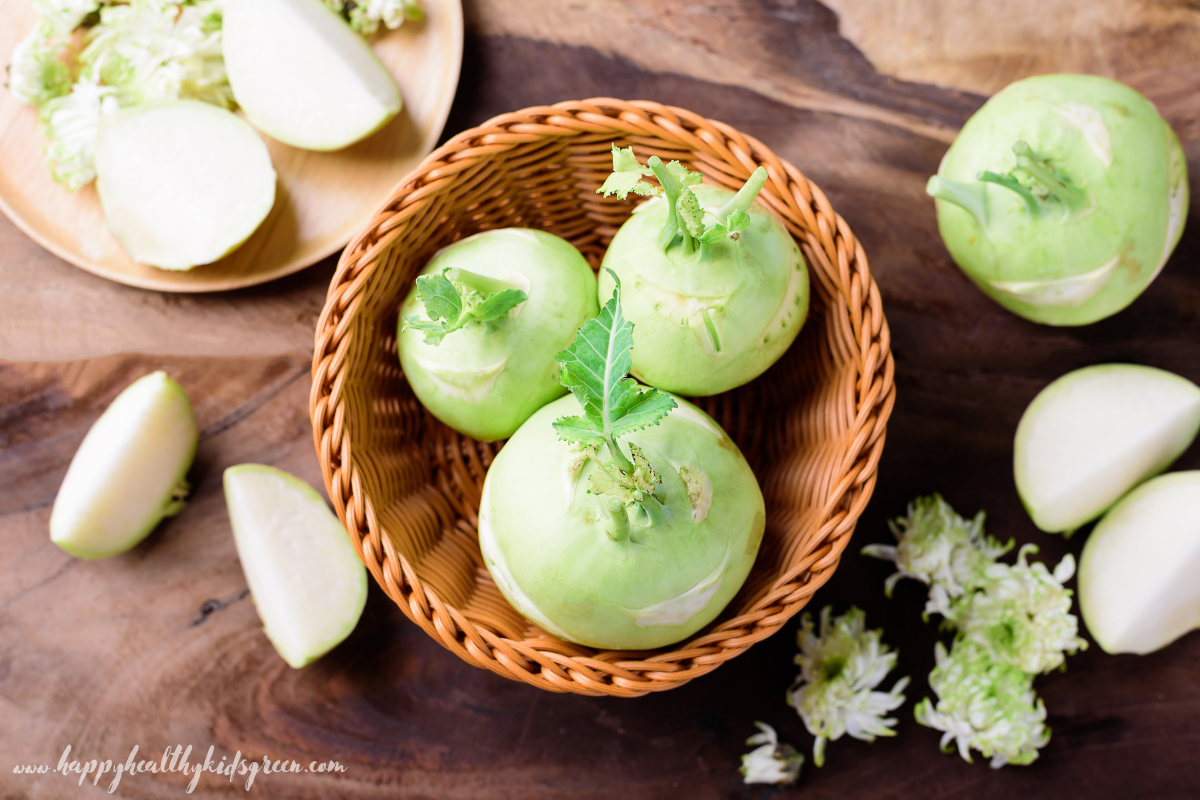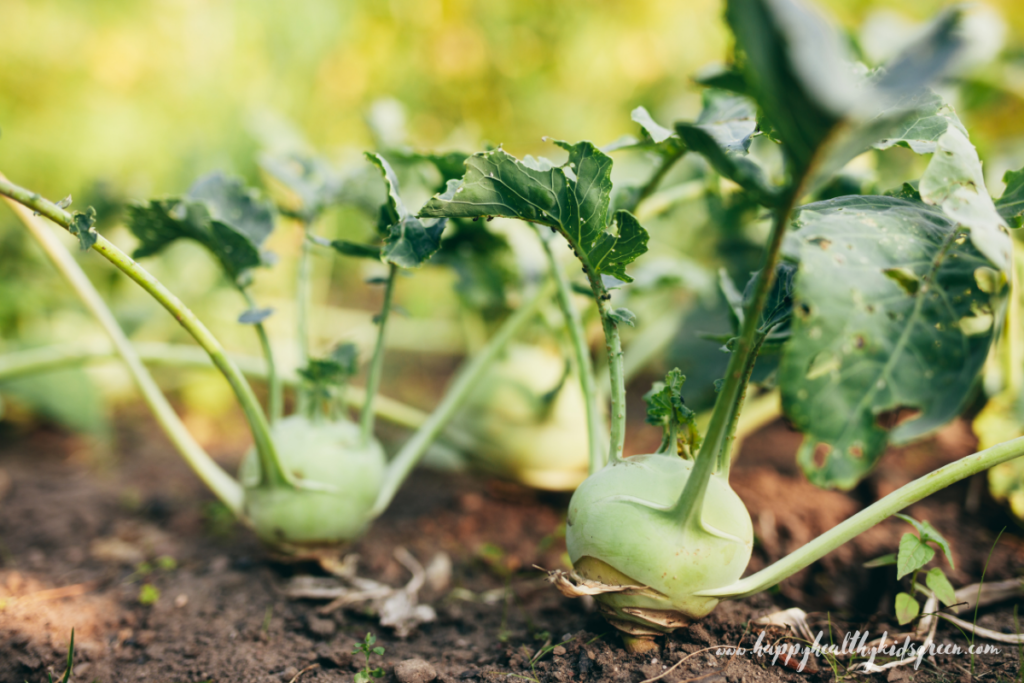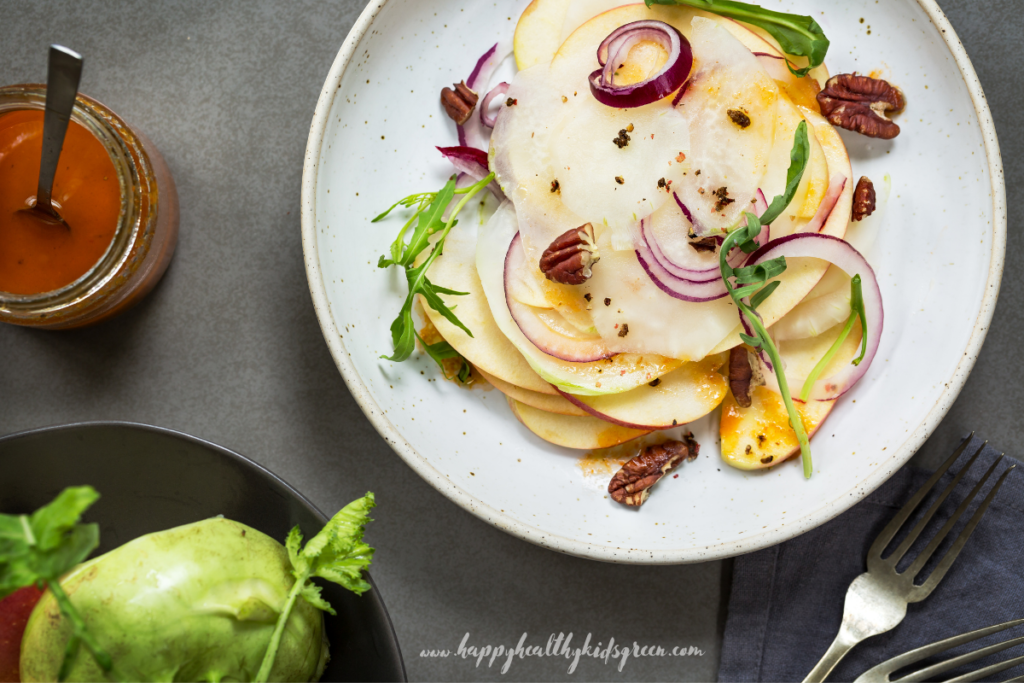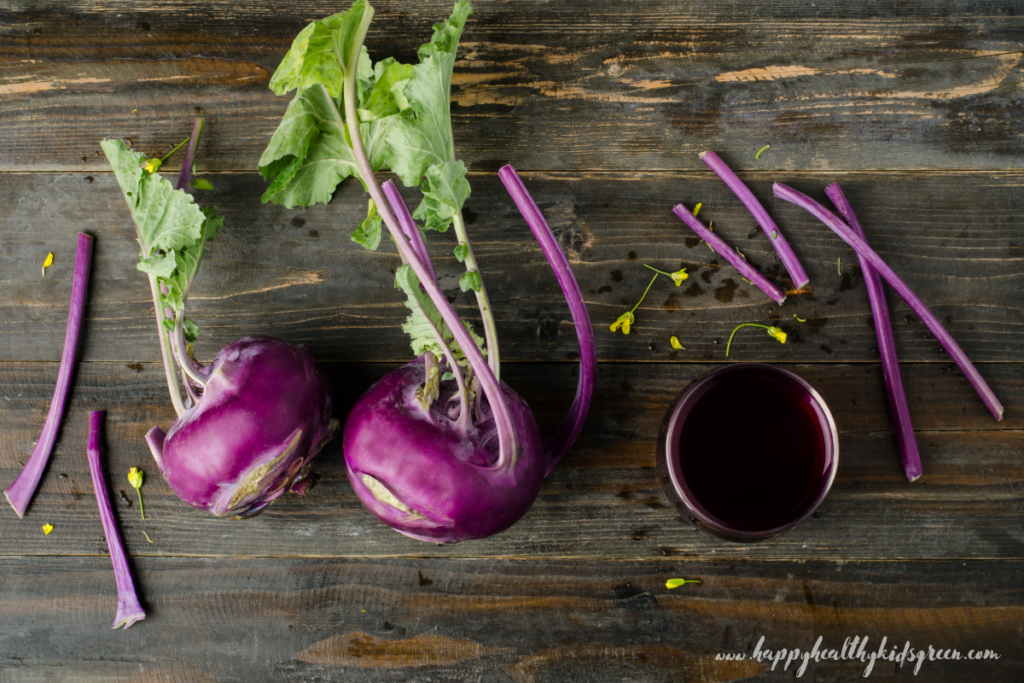KOHLRABI

KOHLRABI – Nutritional Properties, Vitamins
Kohlrabi, also known as the German turnip, is a biennial vegetable belonging to the cabbage family. It is another variety of the same species as cabbage, broccoli, cauliflower, Brussels sprouts, kale, and gai lan.
So does it show similar properties to its cousins? Let’s get to know the operation and use of kohlrabi better.

Kohlrabi comes from regions of Europe and it is in these areas that it is widely grown. Its valuable nutritional and health properties were known and appreciated already in ancient Rome, where it was called Pompeian cabbage. Kohlrabi is a low-calorie vegetable – 100 g provides only 27 kcal. It contains numerous vitamins, such as: B vitamins (B1, B2, B3, B6, folic acid), vitamin C, E, K and beta carotene, i.e. vitamin A provitamin. Kohlrabi is also a good source of minerals, among which there are: calcium, iron, potassium, phosphorus, magnesium, zinc. This vegetable provides many valuable substances for the body that ensure its proper functioning. They include, among others lutein, glucosinolates and dietary fiber.
Young kohlrabi is crispy and has a sweet flesh, slightly similar to broccoli. The older one, on the other hand, is characterized by long stems with hard fibers inside. There are two types of kohlrabi, green and purple.
KOHLRABI – Health Properties
Kohlrabi is a very good source of vitamin C and minerals such as magnesium, phosphorus, iron, potassium, copper and manganese. It also contains folic acid and B vitamins. Thanks to the content of all these nutrients, kohlrabi has a strong antioxidant effect as well as cleansing and alkalizing the body (deacidifying). The content of B vitamins means that kohlrabi supports the functioning of the nervous system and improves metabolism. The vitamin C present in kohlrabi effectively increases the body’s immunity, influences the proper condition of blood vessels, strengthens their walls and regulates the level of blood pressure. This vegetable is also credited with anti-cancer properties due to the presence of antioxidants in its composition. It reduces the risk of breast cancer and supports its treatment.
It helps to fight Helicobacter pylori bacteria, which is the most common cause of gastric and duodenal ulcers. Kohlrabi is a good source of iron and folate. For this reason, it is recommended for people struggling with anemia. Kohlrabi is used in a slimming diet because it is low in calories, and additionally provides dietary fiber (3.6 g / 100 g), which regulates the intestinal function, ensures a regular bowel movement and accelerates metabolic processes. Kohlrabi’s health benefits also include helping to cleanse the body of toxins, fighting inflammation, and accelerating wound healing.
Kohlrabi – Use in the Kitchen
Kohlrabi is a sweet fleshy vegetable that can be eaten raw or stewed, cooked, or gratinated. It provides the body with valuable compounds responsible, among others for regulating the work of the intestines, the proper functioning of the eye and the hematopoietic system. Edible preparations are prepared from both the stem and the leaves. Despite its colloquial names, it is not the same species as turnips.
This valuable vegetable can be eaten and treated as a healthy and independent snack or with the addition of light sauces, e.g. with natural yoghurt. In addition, it can be added to various types of salads and breakfasts in the form of cottage cheese. On its basis, various types of soups, healings and even oriental dishes are made. You can also add young leaves as an addition to salads. Before consuming or using kohlrabi, the vegetable should be thoroughly washed under running water. Then it is recommended to soak the kohlrabi in a common salt solution for about 10 minutes.

Kohlrabi – recipe for a salad with kohlrabi, broad beans and cherries
Components:
⅔ cup of cooked and peeled broad beans,
a few leaves of lettuce,
1 kohlrabi,
1 bunch of fresh tarragon,
2 handfuls of cherries,
60 g of feta cheese,
4 tablespoons of extra virgin olive oil,
2 tablespoons of: lemon juice, maple syrup,
½ tablespoons of finely chopped parsley,
1 teaspoon of pink pepper
sea salt, freshly ground black pepper to taste.
A method of preparing:
- Boil the broad beans in salted water, cool and peel.
Measure out the amount needed for the salad. - Arrange the lettuce leaves on the plate.
- Grate the peeled kohlrabi into thin flakes. Place the kohlrabi on the lettuce, sprinkle with tarragon leaves and pitted, halved cherries.
- Crumble the feta cheese and sprinkle it on the salad.
- In a bowl, combine lemon juice, maple syrup, chopped parsley, crushed pink pepper in a mortar and extra virgin olive oil. Season the sauce with sea salt and freshly ground pepper to taste. Pour over the salad with the finished sauce.
KOHLRABI – Pregnant, for Baby
In future mothers, the need for various vitamins and minerals increases significantly, and their deficiency may contribute to the deterioration of a woman’s health, as well as negatively affect the development of the fetus. Kohlrabi is a vegetable rich in iron and folic acid, so it is recommended in the diet of pregnant women. Folic acid, belonging to the B vitamins, prevents the occurrence of neural tube defects in a child (e.g. meningeal hernia, spina bifida, anencephaly). Iron, on the other hand, protects the woman against anemia, which future mothers are particularly vulnerable to. Kohlrabi is not recommended in the presence of flatulence and problems with the thyroid gland. The vegetable in the form of boiled and ground into a puree or in the form of soups can be served to a child as early as 7 months of age.
How To Properly Choose Kohlrabi?
If you decide to buy kohlrabi, it is worth paying attention to its external appearance and size. It’s best to choose medium-sized ones, as too much of it can contain a lot of water and be overgrown with fiber. The weight of kohlrabi is also important. The heavier the better. It is also worth paying attention to the appearance of the leaves of this vegetable. If it has yellow, it means that they have been given too much fertilizer. On the other hand, the withered ones indicate that they have been stored poorly and are not fresh.
Is There a Risk in Consuming Kohlrabi?
Yes, it is possible. Mainly if it is not thoroughly cleaned. Then it can be a source of infection with bacteria such as E. coli or parasites such as ascariasis. Consumers of this vegetable may also be exposed to goitrogens, chemicals found in cruciferous plants. They have an unfavorable effect – they are volatile and impair the proper functioning of the thyroid. For this reason, people with any thyroid problem should be very careful about including kohlrabi in their diet.
Interesting Facts:
- Kohlrabi does not grow wild, it is only cultivated.
- This vegetable belongs to the same family as cauliflower, cabbage and broccoli.
- Kohlrabi’s growth time is approximately 2 months.
- The highest season for kohlrabi occurs in the spring
- Large-sized kohlrabi is usually overripe, and its flesh is almost a sponge.
- This vegetable is a biennial plant.


